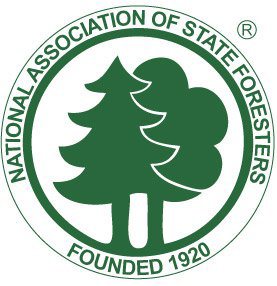State foresters applaud House members and their staffs for advancing a FY 2020 appropriations package that will support the health, resiliency, and productivity of our nation’s forests.
December 18, 2019 - WASHINGTON—The National Association of State Foresters praised members of the U.S. House of Representatives yesterday for their Fiscal Year (FY) 2020 “minibus” that would  fund—among other departments, agencies, and programs—the USDA Forest Service’s State and Private Forestry (S&PF) mission area, which administers vitally important support for state forestry agency operations.
fund—among other departments, agencies, and programs—the USDA Forest Service’s State and Private Forestry (S&PF) mission area, which administers vitally important support for state forestry agency operations.
“The nation’s 59 state and territorial foresters are grateful to our lawmakers in the House for their hard work in getting this appropriations package closer to the finish line,” said Jay Farrell, NASF executive director. “On top of funding increases for five S&PF programs, House members would allocate additional resources to reduce hazardous wildfire fuels and bolster state forestry agencies’ capacity to provide wildland fire protection across ownership boundaries.”
Per HR 1865, S&PF would be allocated $346.99 million in FY 2020, a $10 million increase over the enacted FY 2019 level. The Landscape Scale Restoration, Forest Legacy, and Forest Inventory and Analysis programs would be funded at FY 2019 levels, but all other priority S&PF programs would receive funding increases:
- The Forest Health Management Program on Cooperative Lands would receive $44 million in FY 2020, an increase of $2 million over the FY 2019 enacted level. This program helps state forestry agencies detect, prevent, and/or control the spread of tree-killing insects and disease.
- The Urban and Community Forestry program would receive $32 million in FY 2020, an increase of $2.5 million over the FY 2019 enacted level. With this program, state forestry agencies help communities establish and manage community forests, which collectively benefit 83 percent of Americans.
- The Forest Stewardship program would receive $21 million in FY 2020, an increase of $500,000 over the FY 2019 enacted level. With support from this program, state forestry agencies provide technical management assistance to private forest landowners.
- The State Fire Assistance program would receive $82 million and the Volunteer Fire Assistance program received $18 million in FY 2020, increases of $1 million each over the programs’ FY 2019 enacted levels. With support from these programs, states and local fire departments procure necessary equipment and training for wildland fire prevention, detection, and suppression.
The House “minibus” would also authorize the Secure Rural Schools Self Determination Act for an additional two years and appropriate:
- $5.5 billion for Wildland Fire Management, which includes—for the first time—$2.25 billion in cap-adjusted wildfire suppression funding ($2 billion from the USDA Forest Service and about $300 million from the Interior Department).
- $495 million for the Land and Water Conservation Fund ($237 million of which would go to the federal program and $258 million would go to state programs).
- $445 million ($10 million increase over FY 2019 level) to the Forest Service for hazardous fuel treatments, of which $15 million would be available to state forestry agencies and another $20 million would available for cross-boundary hazardous fuels projects.
To view NASF’s FY 2020 appropriations recommendations, click here.
Source: National Association of State Foresters








